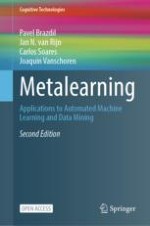This open access book as one of the fastest-growing areas of research in machine learning, metalearning studies principled methods to obtain efficient models and solutions by adapting machine learning and data mining processes. This adaptation usually exploits information from past experience on other tasks and the adaptive processes can involve machine learning approaches. As a related area to metalearning and a hot topic currently, automated machine learning (AutoML) is concerned with automating the machine learning processes. Metalearning and AutoML can help AI learn to control the application of different learning methods and acquire new solutions faster without unnecessary interventions from the user.
This book offers a comprehensive and thorough introduction to almost all aspects of metalearning and AutoML, covering the basic concepts and architecture, evaluation, datasets, hyperparameter optimization, ensembles and workflows, and also how this knowledge can be used to select, combine, compose, adapt and configure both algorithms and models to yield faster and better solutions to data mining and data science problems. It can thus help developers to develop systems that can improve themselves through experience.
This book is a substantial update of the first edition published in 2009. It includes 18 chapters, more than twice as much as the previous version. This enabled the authors to cover the most relevant topics in more depth and incorporate the overview of recent research in the respective area. The book will be of interest to researchers and graduate students in the areas of machine learning, data mining, data science and artificial intelligence.
